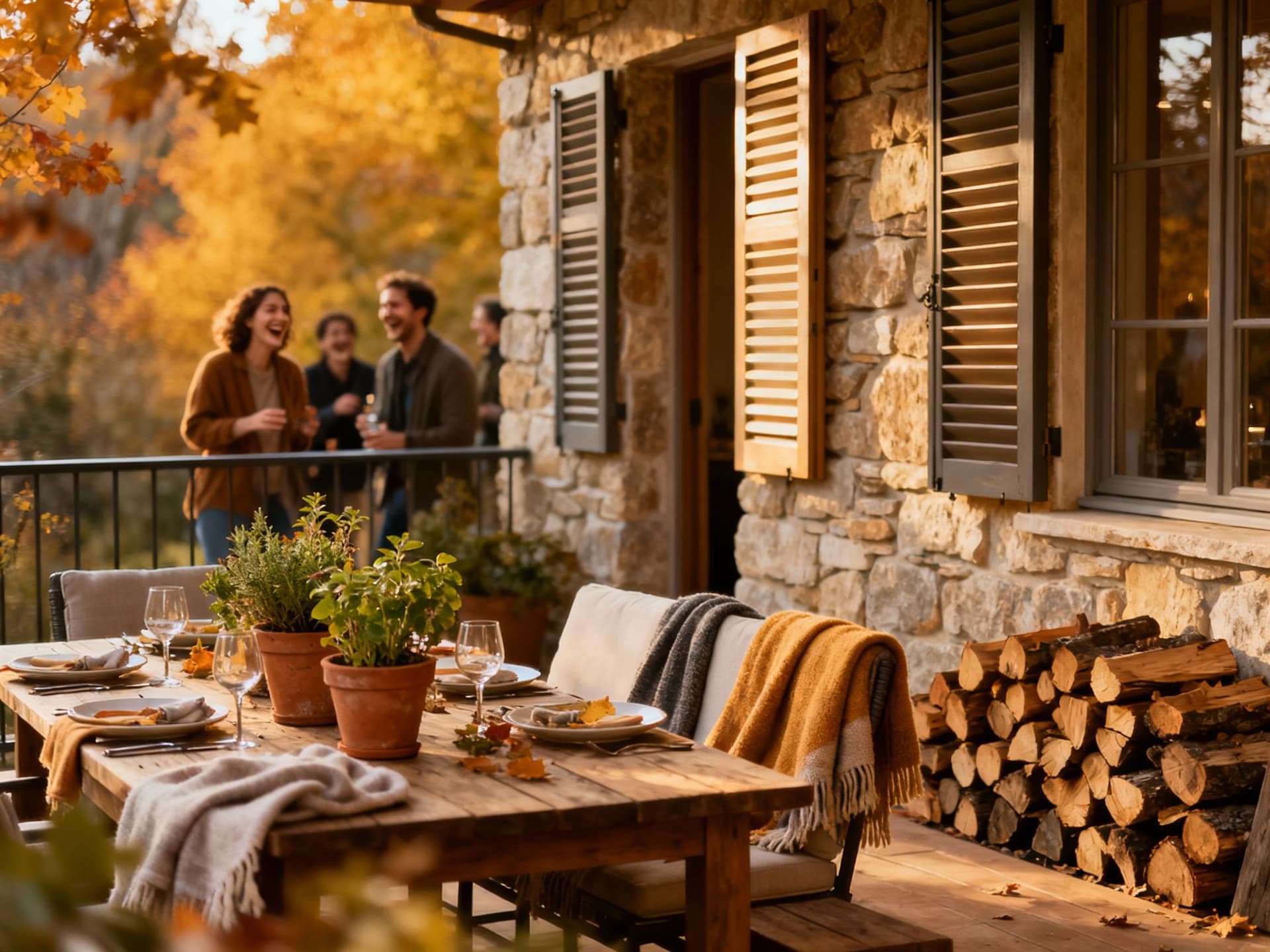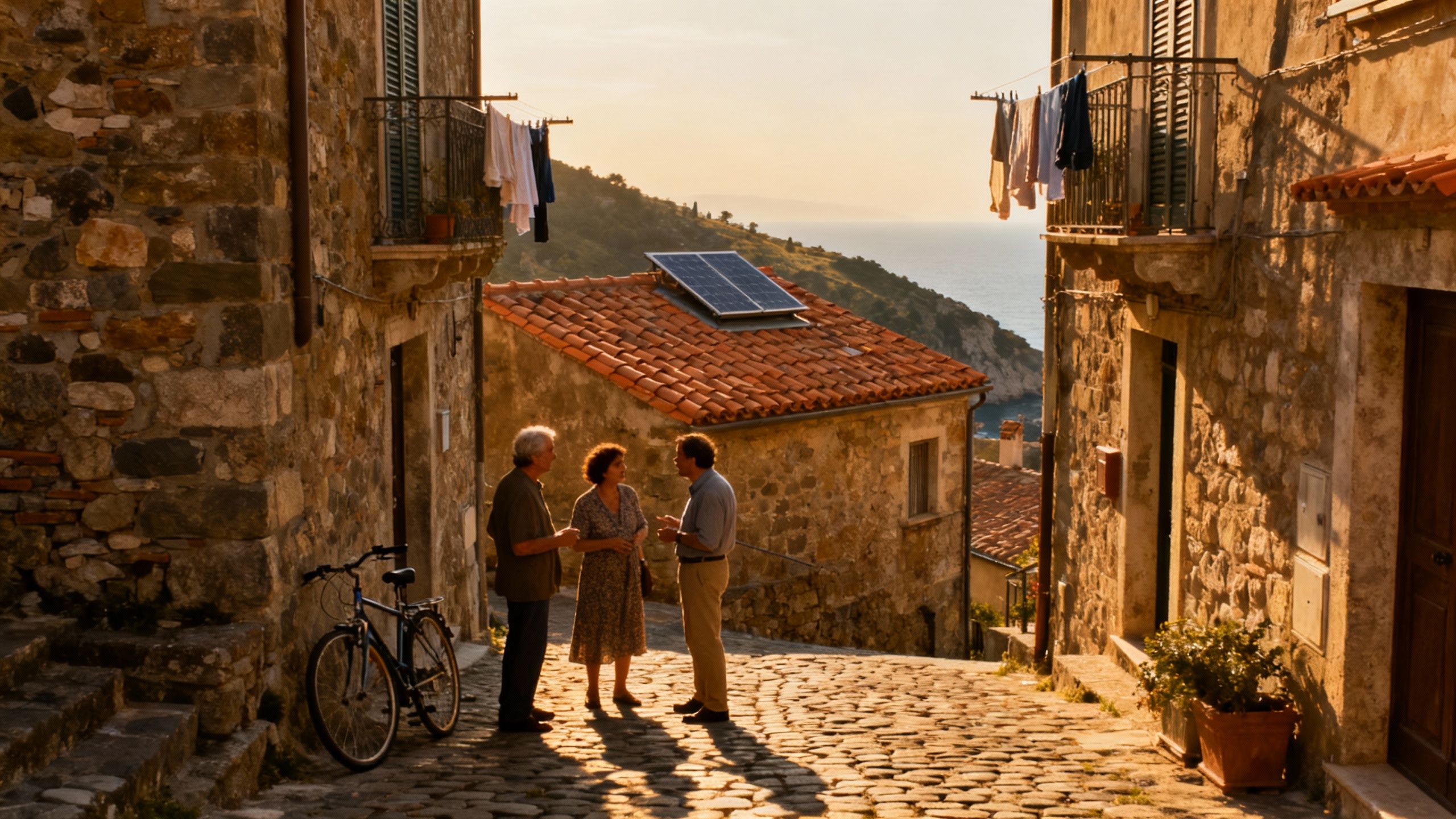Autumn House‑Hunting in France: A Quiet Advantage
Why autumn viewings in France often reveal the real year‑round life, giving eco‑minded buyers negotiating leverage and clearer stewardship signals. Backed by INSEE market data.
Imagine an autumn morning in Provence: steam rising from a café au lait as a market unfolds beneath plane trees, cicadas finally quiet, and stone houses glow with the low, honeyed light of October. For many international buyers, France is an archive of seasons — each one reshapes daily life, the market for homes, and even the best strategies for making an offer. This piece argues a simple contrarian idea: house‑hunting in autumn and early winter can be a smarter, more sustainable choice than the tourist‑thick summer months, especially for buyers seeking properties with ecological value and authentic local life. We'll paint the sensory life, then ground it with market data and practical steps so you can move toward a home that fits both your values and rhythms.
Living the French seasonal life

France lives by season. In Paris, mornings begin in boulangeries; on the Côte d'Azur the light changes the colour of the sea and garden plantings; in the Dordogne and Lot the autumn harvest rearranges the rhythm of markets and small‑town life. These seasonal rhythms influence how neighbourhoods feel, how neighbours gather, and how a property’s outdoor spaces perform across the year. For buyers tuned to green living — edible gardens, passive solar positioning, natural swimming pools — seeing a property in more than one season is essential to judge how it will actually feel year‑round.
Spotlight: Luberon & Lourmarin — village life with seasonal heartbeat
Walk Lourmarin on a Friday in October and you’ll feel why villagers treat market day as both chore and celebration: crates of late tomatoes and squash, local goat cheeses wrapped in paper, artisans arranging woven baskets beneath plane trees. Streets narrow and slow; cafés seat locals who know each stall‑holder’s story. That intimacy is a clue for buyers: look for homes within easy walking distance of the market square and you inherit a ready‑made social life, lower car dependence, and year‑round community resilience.
Food, markets and living seasons
Markets are the practical heart of French seasonal living: spring for asparagus and wild garlic, summer for melons and tomatoes, autumn for chestnuts and mushrooms. For international buyers, proximity to a weekly marché changes daily life — you’ll cook with what’s local, reduce food miles, and join traditions that foster neighbourly ties. From a property perspective, neighbourhoods centered on markets tend to retain value because they offer an everyday quality of life tourists cannot replicate.
- Lifestyle highlights to scout in autumn viewings
- Early market mornings: check vendor diversity and local footfall (shows lasting community life)
- Village squares that still host events after August: concerts, harvest fêtes, or evening marchés
Making the move: practical considerations in autumn

Data from INSEE and notaries show price movements and transaction activity that matter to timing. After a long slowdown, France returned to modest growth in early 2025 — but regional rhythms remain uneven: Paris, the Riviera and certain Alpine resorts behave differently to rural Provence or Brittany. Autumn often reveals the real velocity of local markets: fewer tourists, more motivated local sellers, and clearer assessments of winter costs (heating, roof exposure, road access) that can affect negotiating leverage.
Property styles and seasonal fit
Stone mas with thick walls behaves differently in winter than a modern glass‑fronted villa; terraces exposed to northern winds need different planting and glazing choices. When you view in autumn, pay attention to insulation, rainwater drainage, and how south‑facing windows harvest low winter sun. These are not glamorous checks, but they determine whether a home will be warm, efficient, and genuinely low‑impact across the year — which is essential for buyers who prize sustainability as well as comfort.
Working with local experts who know seasons
Choose agents and notaires who live locally and understand seasonal maintenance cycles — someone who can tell you whether a lane is salted in January, which wells run dry in late summer, or which neighbouring plots are likely to be rewilded. A good local agent will arrange winter‑season inspections: thermal performance tests, roof surveys after autumn storms, and conversations with neighbours about full‑year life. That expertise turns evocative seasonal imagination into reliable ownership decisions.
- Step‑by‑step autumn house‑hunting checklist
- 1. Visit the property on a damp or cool morning to assess insulation, condensation, and access.
- 2. Ask for recent energy bills and request a seller‑arranged heating test so you see winter costs.
- 3. Meet neighbours or the mayor (mairie) to understand communal services through winter and local stewardship projects.
Insider knowledge: what expats wish they'd known
Expat stories often repeat the same lesson: summer is seductive but misleading. A terrace that bakes in July may be unusable in October; a seaside lane busy in August becomes quiet and cold in November. Buyers who thought they bought a year‑round idyll had to retrofit insulation, reroute drainage, or accept higher heating bills. Seeing the real, quieter seasons helps you spot which properties are resilient and which are merely photogenic in peak months.
Cultural nuances and community rhythms
Understanding local tempo matters: small towns close for August; boulangeries may shut half‑day on Wednesdays; fêtes de village concentrate activity. In autumn you’ll see where life truly centers — the active associations, gardening circles, volunteer firefighters — and whether you're likely to become part of that weave. For buyers seeking integration rather than a holiday bubble, this social map is as valuable as a roof inspection.
Long‑term stewardship and ecological choices
Autumn is also when many ecological projects begin: tree planting, hedgerow management, and preparation for winter forage. If regenerative gardens, water capture, and biodiversity are priorities, ask about past stewardship and any communal ecological plans. Properties that are part of local conservation initiatives often cost less upfront in maintenance and deliver more lived satisfaction over the years.
- Red flags you can spot in autumn viewings
- Persistent damp smells, unheated rooms that never dry, or plaster stains (hidden rot risks).
- Roads that become muddy or impassable after rain — ask for winter access records.
- Isolated wells or unreliable communal water in late summer — check community water plans.
After a season‑aware search, the practical next steps are simple: brief a local agent experienced in year‑round life, commission targeted inspections (thermal, roof, damp), and ask sellers for recent winter and autumn utility records. These steps preserve the romance of buying in France while making the deal robust and future‑facing.
Conclusion: Autumn gives you something summer cannot — honesty. The quiet reveals how a place breathes when tourists leave and seasons turn, and that truth is vital for buyers who want a home that is both beautiful and sustainable. If you come in autumn, you’ll meet neighbours, smell the earth after rain, and make offers with eyes wide open. When you’re ready, work with a local agent who knows the seasons and can translate the lived rhythms into a property that will serve you — in every month of the year.
Danish relocation specialist who moved from Copenhagen to the Algarve; supports families with seamless transitions, local partnerships, and mindful purchases.


